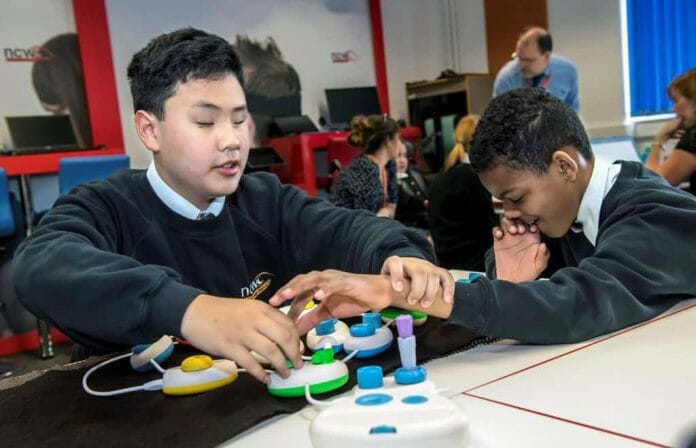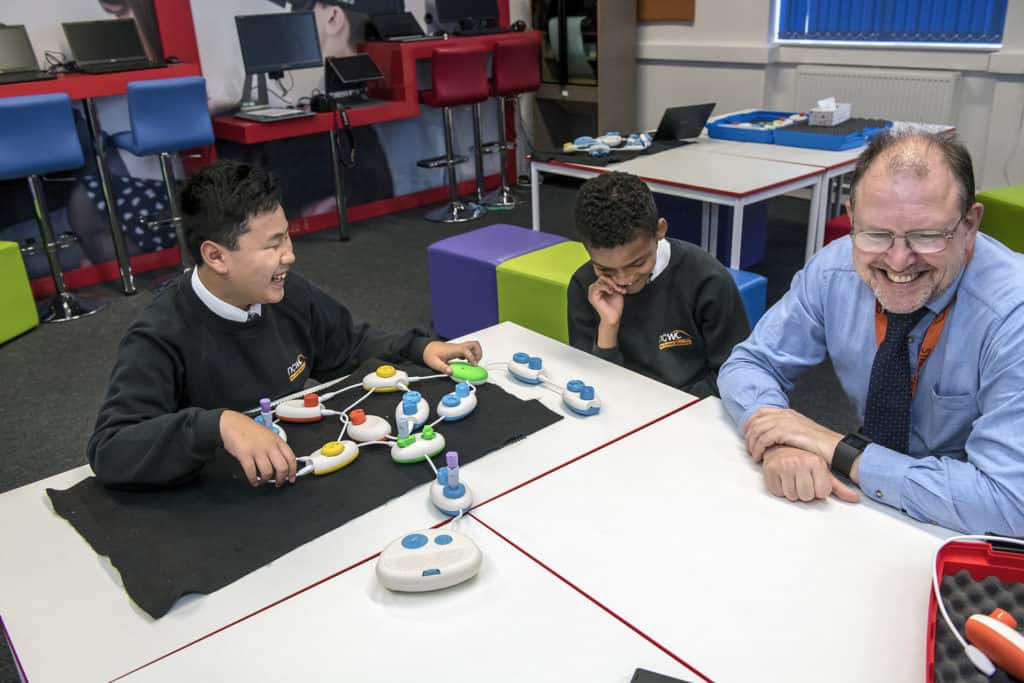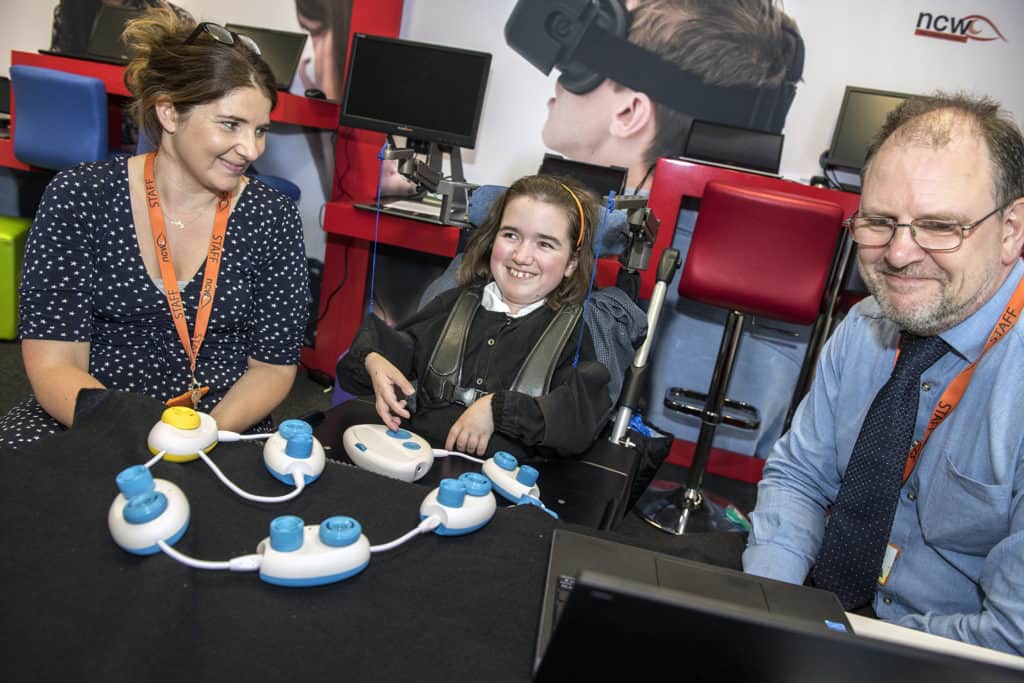
With Code Jumper, experts look to jumpstart computer science interest for kids who are blind

Microsoft announced plans to transfer the research and technology behind Code Jumper to the American Printing House for the Blind, a nonprofit based in Louisville, Kentucky, that creates and distributes products and services for people who are blind or with low vision. Over the next five years, APH plans to offer Code Jumper and related curriculum to students throughout the world, with a target audience of students who are 7 to 11 years old.
The students at New College Worcester are all blind or with low vision, and they are part of a group of students across the UK who have spent the previous school year beta testing Project Torino, a research project that led to the development of a new product called Code Jumper. It’s a physical programming language that is designed to be inclusive of children with all ranges of vision.
Instead of poking at tablet screens or typing into laptops, these students are taking out brightly colored plastic pods, connecting them together with thick white wires and then adjusting the pod’s buttons and knobs. These physical components will be used to create computer programs that can tell stories, make music and even crack jokes.
“What I like about Project Torino is that you can actually touch, physically, the program,” said Victoria, 14 and a student at the school, which serves about 80 students.
The nonprofit’s leaders say the goal isn’t just to introduce kids to coding – it’s also to give them the underlying skills that can lead to a career in computer science.
“This is an opportunity for thousands of people to have meaningful and well-paying jobs,” said Larry Skutchan, director of technology and product research for APH.
The impetus for Code Jumper began about four years ago, when Cecily Morrison, a Microsoft researcher and computer scientist, began exploring technology options for her son, Ronan, who was born blind. Morrison was surprised to discover that many of the technologies available to Ronan and other children who are blind were far clunkier and more out-of-date than the smartphones, tablets and other technology that most kids today use, because few organizations had the resources to modernize them.
“A lot of it really felt like technology of the past,” Cecily said.
What’s more, she found, the most popular path to introducing young children to coding, usually called block coding, wasn’t very accessible because it couldn’t easily be read with assistive technology such as a screen reader or magnifier.
“It became really clear that, for a 7 or 8 year-old, it was going to be really hard to use assistive technology to code. We realized we really need something physical, something that would excite the hands,” she added.
None of this would come as a surprise to the students at New College Worcester. As they assembled their programs, some recalled computer science classrooms in which they had been told to do touch typing – which is a method of typing by muscle memory instead of looking at the keyboard – while the other kids in their classes used block coding to write basic computer programs. Others shared the frustrations of trying to learn more complex coding skills like Python or JavaScript without the grounding in more simplified coding systems many other students were getting to use.
With Code Jumper, they said, they were immediately able to experiment and build programs.
“I just felt very independent, and I liked that,” said Daniel, who at 11 years old already knows he wants to pursue a career in computer science. “It kind of made me inspired to do more coding.”
On this day, Daniel was collaborating with another student, Rico. The 12-year-old’s favorite subjects are IT and science, and he said that in his previous school he only got to do touch typing. With Code Jumper, he was able to write an actual program for the first time.
“To just do coding, it was a fun experience,” he said.
As the kids worked on their programs, Jonathan Fogg, head of computing and IT at New College Worcester, walked around the classroom, helping them with things like debugging. Fogg also watched with evident delight as they ran their programs for him. He said Project Torino was unlike anything he’d been able to provide the kids before now.
“There really isn’t an equivalent to this physical way of programming,” Fogg said.
The early access to basic coding skills is important, Fogg said, because many kids who are blind or low vision are drawn to careers in computer science. He thinks that’s partly because many of the skills kids with low vision develop to navigate the world make them good at the kind of computational thinking that’s helpful for a computer science career. And, he said, traditionally it has been a career that is more accessible to people who are blind or low vision, because of tools such as screen readers.
But at a young age, he said, he’s found that many kids are afraid to start playing around with a computer, especially if they know it’s an expensive, fragile machine.
“If they’re not confident, they won’t have a go at the computer because they’re afraid they’ll break it,” he added. “But once they’ve gotten over that barrier, then they’ve been successful. Project Torino reinforces that – they can’t break it and they can do all these really, really cool things.”









